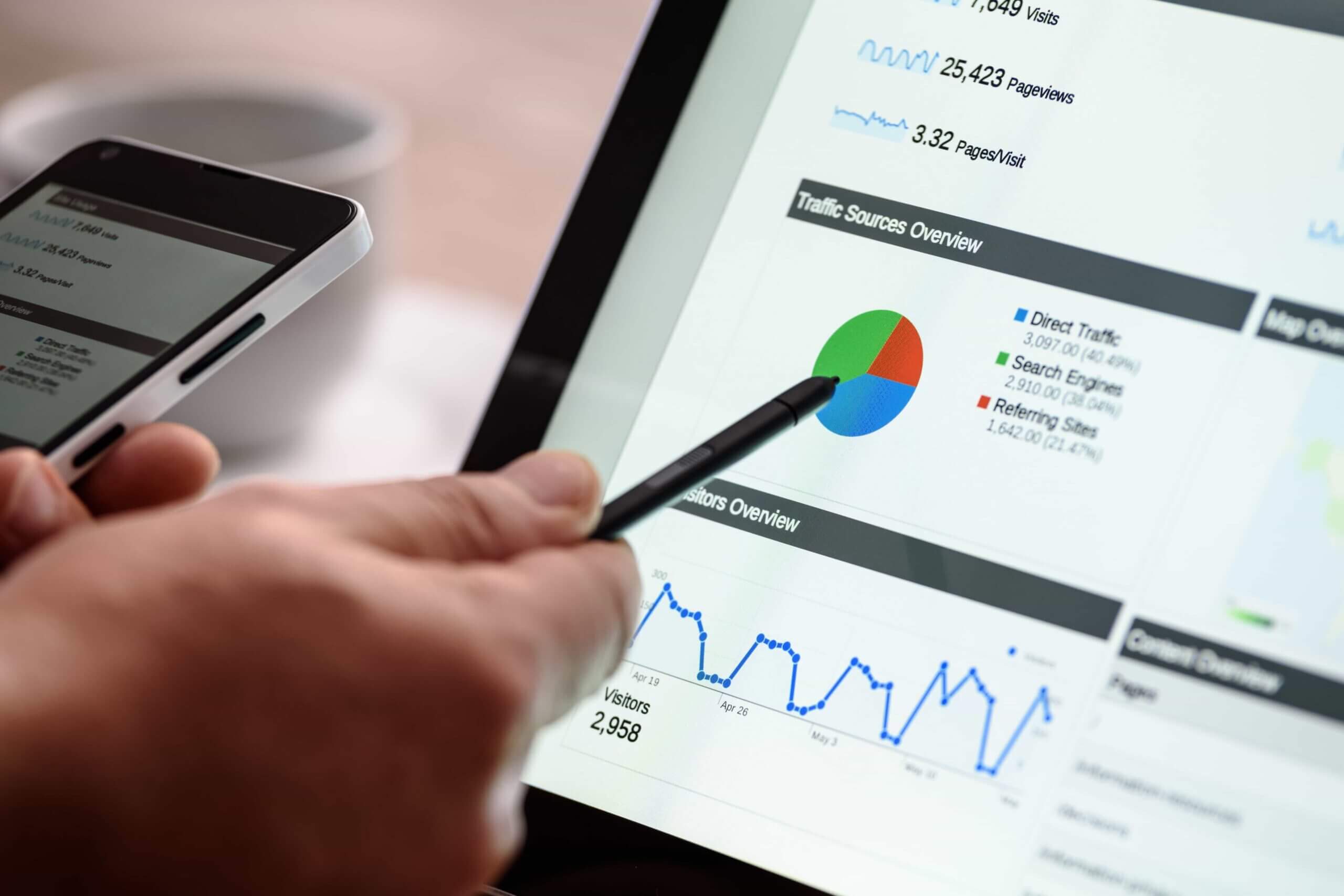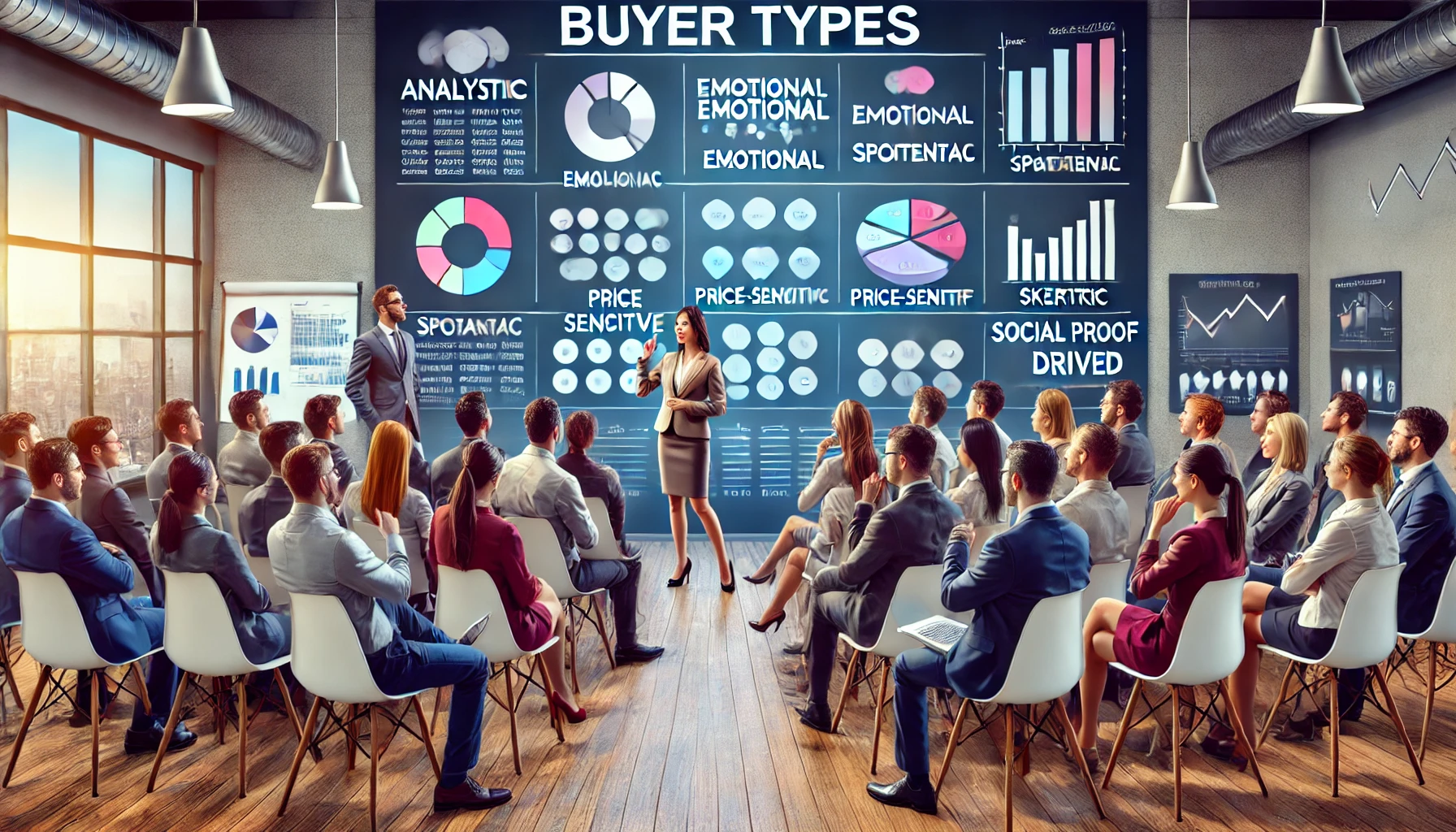Best Practices in Sales: Understanding Customer Types & Accelerating Decision-Making
In today’s hyper-competitive market, the ability to understand customer psychology and decision-making is what separates good salespeople from great ones. The best sales professionals don’t just sell a product or service; they solve problems, improve outcomes, and help customers make faster, more confident purchasing decisions. By combining storytelling, data-driven decision-making, and value-based selling, top salespeople become indispensable assets to any company looking for rockstar performers.
Understanding Customer Types & Tailoring Your Approach
Not all customers make decisions the same way. Recognizing the buyer type allows you to adjust your strategy and communicate in a way that resonates with them. Here are the six primary customer types and how to sell to each effectively:
1. The Analytical Buyer (Logic-Driven & Data-Oriented)
These buyers make decisions based on facts, research, and comparisons. They take their time and want to ensure they’re making a well-informed choice.
Best Practices:
- Provide research, case studies, and technical details.
- Use comparisons to highlight why your product outperforms competitors.
- Stick to measurable benefits and avoid exaggerated claims.
- Offer data-driven guarantees (e.g., “reduces airborne contaminants by 90%”).
- Be patient and answer detailed questions with precision.
- Give them space to analyze without applying pressure.
2. The Emotional Buyer (Feelings & Experience-Oriented)
These buyers are driven by personal desires, aspirations, and how a product makes them feel.
Best Practices:
- Use storytelling to create an emotional connection.
- Help them visualize how their life will improve with your product.
- Emphasize comfort, security, and personal well-being.
- Use testimonials and success stories.
- Focus on the emotional relief or excitement the product delivers.
- Speak in a warm and engaging tone.
3. The Spontaneous Buyer (Fast Decision-Maker & Urgency-Driven)
Spontaneous buyers make decisions quickly and don’t want to be overwhelmed with too much information.
Best Practices:
- Keep your pitch short, simple, and to the point.
- Create a sense of urgency (limited-time offers, exclusive deals).
- Highlight instant benefits (e.g., “starts working immediately”).
- Match their energy and enthusiasm.
- Offer fast purchasing options.
- Use high-energy sales techniques and excitement.
4. The Price-Sensitive Buyer (Budget-Conscious & Value-Seeking)
These buyers focus on cost and getting the best deal.
Best Practices:
- Highlight cost savings and value-for-money benefits.
- Offer payment plans, discounts, and flexible options.
- Show long-term cost benefits (e.g., “Saves you $500 per year”).
- Compare your solution to competitors to showcase better value.
- Provide warranties, money-back guarantees, and risk-free trials.
- Reinforce durability and long-term savings.
5. The Skeptical Buyer (Trust-Driven & Cautious)
Skeptical buyers need reassurance, proof, and guarantees before committing.
Best Practices:
- Build trust through testimonials, reviews, and case studies.
- Offer risk-free trials or money-back guarantees.
- Show credibility with certifications and expert endorsements.
- Be transparent about how your product works.
- Address objections with logical responses.
- Stay patient and allow them to process their decision.
6. The Social Proof Buyer (Influence & Popularity-Driven)
These buyers trust recommendations, trends, and what others are using.
Best Practices:
- Highlight customer reviews and testimonials.
- Showcase influencer endorsements and media mentions.
- Use phrases like “Join 10,000+ happy customers!”
- Leverage referral programs and word-of-mouth marketing.
- Show real-life success stories and social media validation.
- Create a sense of belonging and community around your product.
Helping Customers Make Faster Decisions
The goal of every salesperson should be to remove friction in the buying process and help customers feel confident about their decision. Here’s how to speed up the sales cycle:
1. Understand Their Pain Points & Solve Problems
Customers buy solutions, not just products. Clearly articulate how your offering addresses their biggest challenges.
2. Improve Outcomes Through Storytelling
Stories create emotional connections and make information more memorable. Share real-life examples of how your product has transformed customers’ lives.
3. Use Data to Back Up Claims
Even emotional buyers appreciate proof. Combine storytelling with statistics to make your pitch more compelling.
4. Offer Reassurance with Guarantees & a “Nothing to Lose” Mindset
Risk-free offers eliminate hesitation. Use money-back guarantees, warranties, or free trials to build trust and minimize perceived risk.
5. Help Them Visualize the Benefits
Encourage potential customers to picture themselves enjoying the benefits of your product. Use phrases like “Imagine waking up every morning breathing cleaner air.”
6. Use the Giver’s Gain Selling Method
Shift from a transactional mindset to a value-driven one. When you genuinely help customers make better decisions, they’ll naturally want to buy from you.
Final Thoughts: Becoming a Rockstar Salesperson
Mastering sales isn’t about manipulation – it’s about understanding human behavior, providing value, and making decision-making easier for customers. The best salespeople:
– Identify customer types and adjust their approach accordingly.
– Focus on solving real problems, not just selling products.
– Use a mix of storytelling, logic, and trust-building to drive confidence.
– Eliminate friction and offer guarantees that reduce hesitation.
– Leverage data, social proof, and emotion to create a compelling sales pitch.
In today’s fast-moving business landscape, companies are actively looking for sales professionals who can navigate complex buying behaviors and accelerate sales cycles. By applying these best practices, you’ll not only close more deals but also establish yourself as an invaluable asset to any organization.
What to listen for during a sales call
Pay attention to the customer’s language and questions—these are strong indicators of their buying style.
| Customer Type | Common Phrases & Clues |
|---|---|
| Analytical Buyer (Logic-Driven) | “Can you send me the specs?” / “How does this compare to competitors?” / “I need to research more.” |
| Emotional Buyer (Feeling-Driven) | “I just want something that feels right.” / “I love the idea of…” / “That sounds exciting!” |
| Spontaneous Buyer (Fast & Impulsive) | “Can I buy this right now?” / “I don’t have time for details—just tell me the best option.” |
| Price-Sensitive Buyer (Budget-Driven) | “What’s the best deal you can give me?” / “Is there a discount?” / “I need to stay within my budget.” |
| Skeptical Buyer (Trust-Driven) | “How do I know this will work?” / “I’ve been burned before.” / “Can I get a guarantee?” |
| Social Proof Buyer (Influence-Driven) | “Who else is using this?” / “Do you have reviews?” / “What do experts say?” |
Start implementing these techniques today and watch your success soar.





Leave a Reply